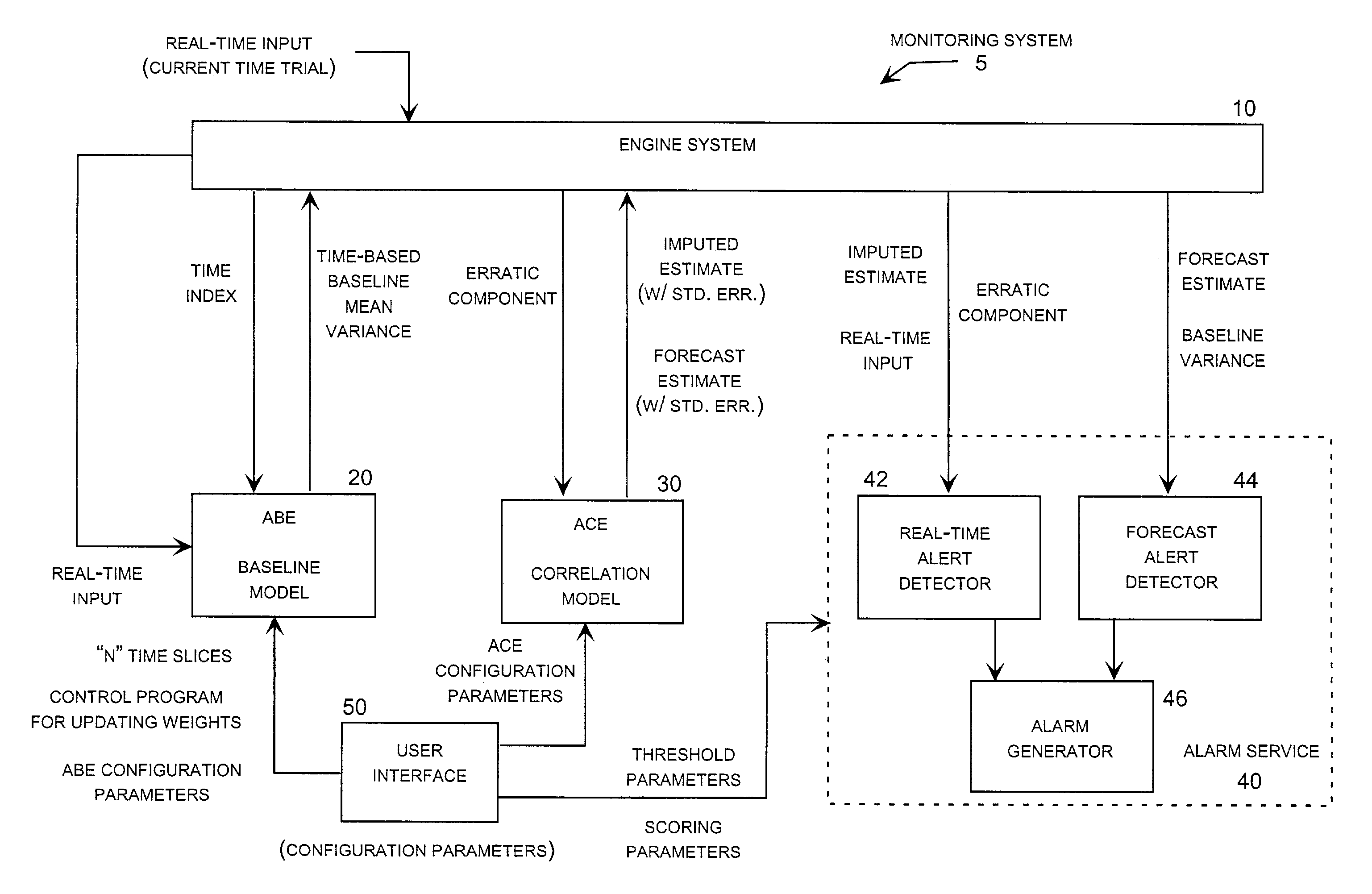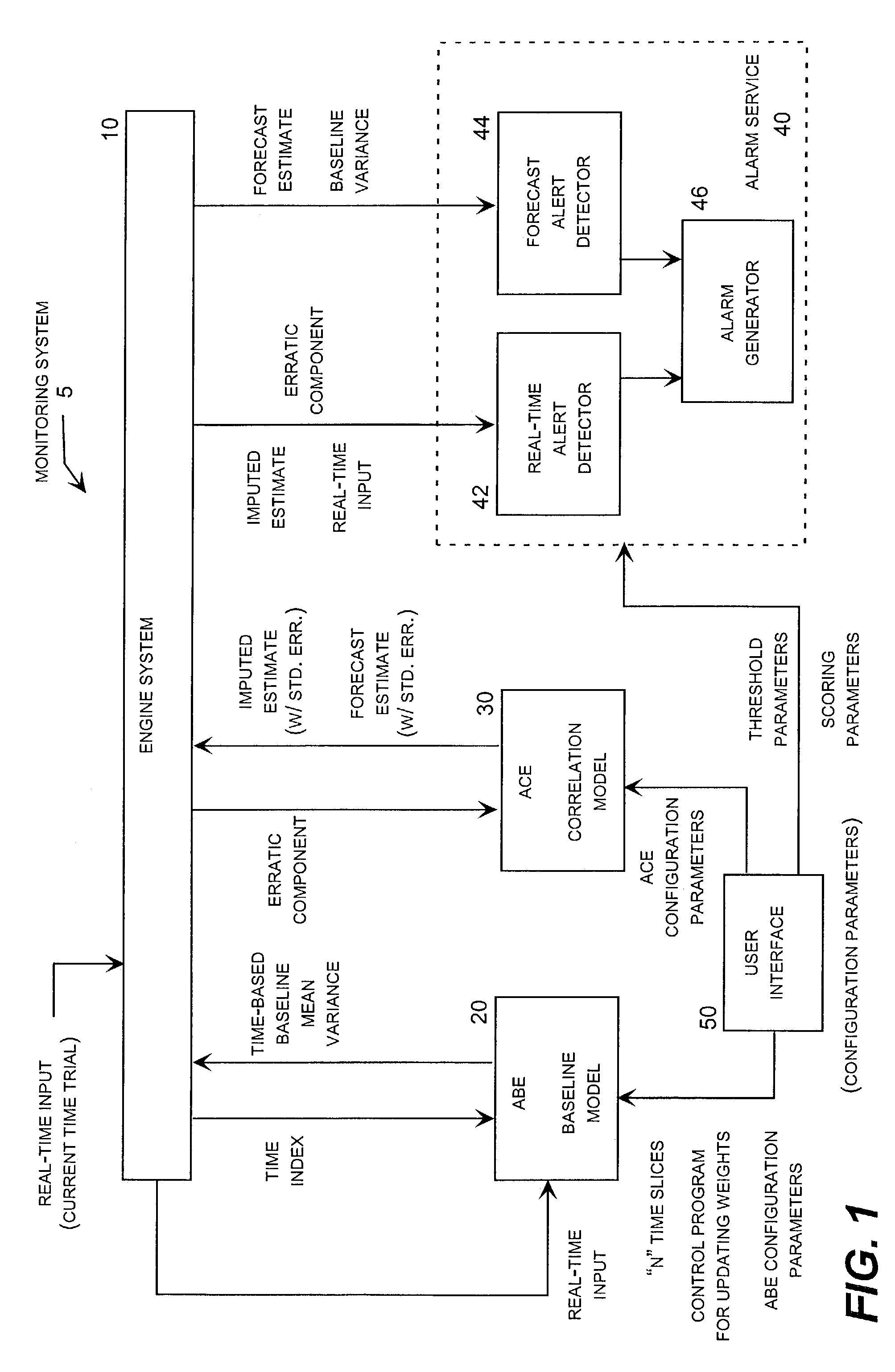Method and system for analyzing and predicting the performance of computer network using time series measurements
a computer network and time series measurement technology, applied in the field of computerized monitoring and modeling systems, can solve problems such as difficult to reliably detect, abnormal system behavior, and relatively erratic operation patterns
- Summary
- Abstract
- Description
- Claims
- Application Information
AI Technical Summary
Benefits of technology
Problems solved by technology
Method used
Image
Examples
Embodiment Construction
[0040]The present invention may be embodied in a system intended to address the task of modeling, estimating, predicting and detecting abnormal behavior in systems that exhibit unpredictable abnormal events superimposed on top of rapidly fluctuating and continuously changing normally operational patterns. As noted above, this system will be referred to as a “monitoring system” for descriptive convenience. However, it should be understood that it may perform additional functions, such as predicting abnormal system behavior, activating alerts and alarms based on detected or predicted system problems, implementing response actions to detected system problems, accumulating descriptive statistics, implementing user-defined system tuning, and so forth.
[0041]Although the embodiments of the invention described below are tailored to operate as a monitoring system for a complex computer network or server system, it should be understood that the monitoring system may be used for any of a wide ...
PUM
 Login to View More
Login to View More Abstract
Description
Claims
Application Information
 Login to View More
Login to View More - R&D
- Intellectual Property
- Life Sciences
- Materials
- Tech Scout
- Unparalleled Data Quality
- Higher Quality Content
- 60% Fewer Hallucinations
Browse by: Latest US Patents, China's latest patents, Technical Efficacy Thesaurus, Application Domain, Technology Topic, Popular Technical Reports.
© 2025 PatSnap. All rights reserved.Legal|Privacy policy|Modern Slavery Act Transparency Statement|Sitemap|About US| Contact US: help@patsnap.com



